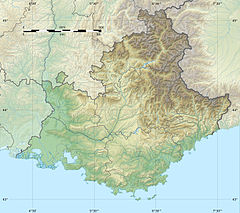| Alternative names | Observatoire de Marseille | ||||
|---|---|---|---|---|---|
| Organization | Observatoire des Science de l'Univers Institut Pythéas | ||||
| Observatory code | 014 | ||||
| Location | Marseille, France | ||||
| Coordinates | 43°18′20″N 5°23′41″E / 43.30547°N 5.39477°E | ||||
| Altitude | 40 m (130 ft) | ||||
| Established | 1702 | ||||
| Website | www | ||||
| Telescopes | |||||
| |||||

Marseille Observatory (French: Observatoire de Marseille) is an astronomical observatory located in Marseille, France, with a history that goes back to the early 18th century. In its 1877 incarnation, it was the discovery site of a group of galaxies known as Stephan's Quintet, discovered by its director Édouard Stephan. Marseille Observatory is now run as a joint research unit by Aix-Marseille University and the French National Center for Scientific Research (CNRS).
The old Palais Longchamp facilities are a noted tourist attraction in Marseille, and a planetarium was also added in 2001.[1][2] One of the noted exhibits is the Foucault glass-mirror telescope, and various items from centuries of astronomical activities.
Foucault's telescope is a noted historical example because it was the forerunner of the modern style of big reflecting telescopes which use a minute layer of metal on a figured piece of glass. Before this, the main technology was to make the whole mirror of metal, and it would really be another half-century before silvered glass mirrors really caught on for astronomy. A major change in the 20th century was to shift from using solution to coat the glass with silver to using a vapor deposition process.
- ^ "Top 10 family activities in Provence to enjoy with your clan". Provence. Retrieved 17 November 2019.
- ^ Cite error: The named reference
:9was invoked but never defined (see the help page).

